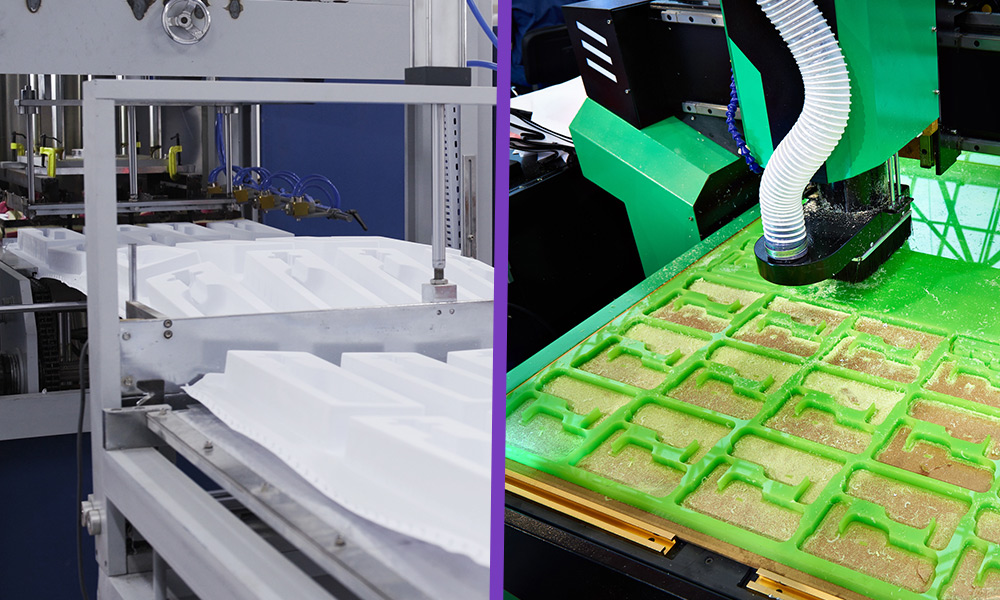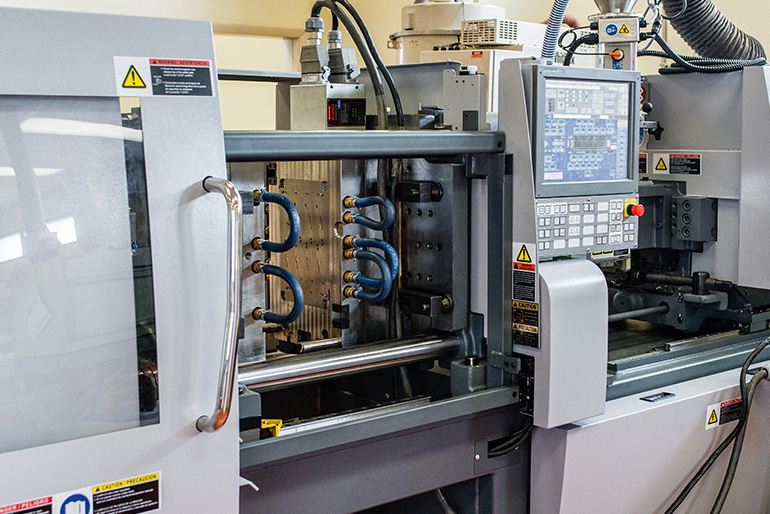The Effect of Plastic Injection Molding on Reducing Manufacturing Prices and Waste
The Effect of Plastic Injection Molding on Reducing Manufacturing Prices and Waste
Blog Article
Understanding the Fundamentals of Plastic Injection Molding Processes
Plastic injection molding serves as a keystone of modern production, providing a methodical strategy to creating complicated elements with precision. Discovering these essential components might disclose how even minor changes can lead to substantial improvements in production end results, increasing concerns regarding the capacity for technology in this recognized process.
What Is Plastic Shot Molding?
Plastic injection molding is a widely used production procedure that transforms thermosetting and thermoplastic products into precise and complex shapes. This technique is favored for its ability to create high quantities of similar get rid of phenomenal precision, making it a vital approach in numerous industries, consisting of automobile, durable goods, and clinical tools.
The process involves melting the selected plastic product and injecting it into a mold and mildew under high stress. The mold and mildew, created to the requirements of the wanted component, allows the liquified plastic to materialize as it solidifies and cools down. As soon as the material has actually solidified, the mold and mildew is opened, and the completed part is expelled.
Plastic shot molding supplies several advantages, including reduced waste, consistency in production, and the capacity to include detailed layouts that might be challenging with other manufacturing techniques. Additionally, it sustains a wide array of products, each supplying distinct residential properties that can be tailored for certain applications. As sectors continue to innovate, plastic injection molding continues to be at the center, making it possible for the growth of sophisticated products that fulfill advancing customer needs.
The Injection Molding Process
The shot molding process is an innovative technique that involves a number of key stages to create high-grade plastic elements. At first, plastic pellets are fed right into a heated barrel where they are merged a viscous fluid. This molten plastic is then injected under high stress into a precision-engineered mold and mildew, which forms the product right into the desired kind.
Once the mold is loaded, the plastic is enabled to strengthen and cool down, taking the form of the mold tooth cavity. Air conditioning time is essential, as it impacts the cycle time and the last properties of the molded component. After sufficient cooling, the mold and mildew opens up, and the completed component is ejected utilizing ejector pins.

Products Utilized in Shot Molding
Different materials can be utilized in the injection molding process, each offering unique buildings that deal with specific applications. The most typically made use of products consist of thermoplastics, thermosetting plastics, and elastomers.

Thermosetting plastics, like epoxy and phenolic resins, go through a chemical change throughout the healing process, causing a stiff, inflexible structure. These products are ideal for applications calling for high warmth resistance and structural stability, usually utilized in vehicle parts and electrical insulators.
Elastomers, consisting of silicone and rubber-based products, provide flexibility and strength. Their distinct properties make them ideal for applications that demand elasticity, such as seals and gaskets.
Additionally, specialized materials like bio-based plastics and composites are acquiring traction for their ecological benefits and enhanced performance attributes, broadening the range of shot molding applications in numerous sectors. Comprehending the properties of these products is critical for selecting the appropriate type for specific projects.
Benefits of Shot Molding
Shot molding stands out as a highly effective production process that uses countless advantages for generating complex get rid of accuracy. One of one of the most substantial benefits is the capacity to develop complex designs that would be difficult or challenging to accomplish with various other methods (Plastic Injection Molding). The procedure enables comprehensive features and tight tolerances, making sure top quality components
Additionally, shot molding is known for its quick production capabilities, making it a suitable option for high-volume production. As soon as the mold and this link mildew is produced, parts can be generated swiftly, lowering preparations and boosting general performance. This performance not only decreases manufacturing costs yet additionally provides an one-upmanship on the market.
The adaptability of materials utilized in injection molding better boosts its allure. A large variety of thermoplastics and thermosetting polymers can be used, permitting manufacturers to select products that ideal meet their particular requirements, including flexibility, warm, and stamina resistance.
Furthermore, the process lessens waste, as excess product can usually be recycled and reused. This sustainability aspect adds to a reduced ecological influence, making shot molding a liable production choice. In general, the benefits of injection molding make it a favored approach for numerous sectors.
Variables Influencing Product Quality
While numerous variables can affect product high quality in shot molding, comprehending these components is important for accomplishing optimum outcomes. Secret aspects consist of product option, refining specifications, and mold and mildew layout.
Material option plays a crucial function, as different polymers exhibit unique homes that affect flowability, additional resources toughness, and thermal stability. Inadequate material option can bring about issues such as warping or insufficient dental filling.
Handling parameters, consisting of stress, cycle, and temperature time, should be diligently managed. Variations in these setups can result in incongruities in part measurements and surface area coating. For example, exceedingly high temperature levels may create degradation of the polymer, while inadequate pressure can cause brief shots.
Mold design is equally essential, as it determines the circulation of the molten plastic and the cooling process. Poorly designed mold and mildews may cause unequal cooling prices, resulting in dimensional mistakes and residual stresses.

Final Thought
Finally, plastic shot molding acts as an important production process that allows the efficient manufacturing of high-grade parts. Proficiency of the shot molding process, consisting of the understanding of products and the influence of various factors on product top quality, is essential for achieving ideal outcomes. The benefits of this method, such as cost-effectiveness and style adaptability, further emphasize its value across multiple markets, strengthening its standing as a recommended option for high-volume production.
Plastic injection molding offers as a keystone of modern manufacturing, providing a systematic method to creating complex elements with precision.Plastic shot molding provides a number of advantages, consisting of minimized waste, uniformity in production, and the capability to integrate intricate layouts that may be challenging with other manufacturing methods (Plastic Injection Molding). As sectors continue to innovate, plastic shot molding stays at the leading edge, allowing the advancement of advanced products that meet progressing consumer demands
The injection molding process is an advanced technique that includes several crucial phases to produce top notch plastic components.In verdict, plastic injection molding serves as a critical production procedure that enables the efficient manufacturing of high-grade components.
Report this page